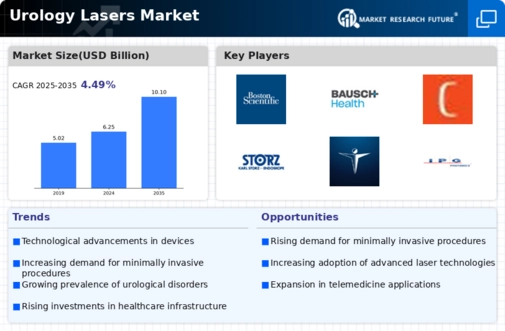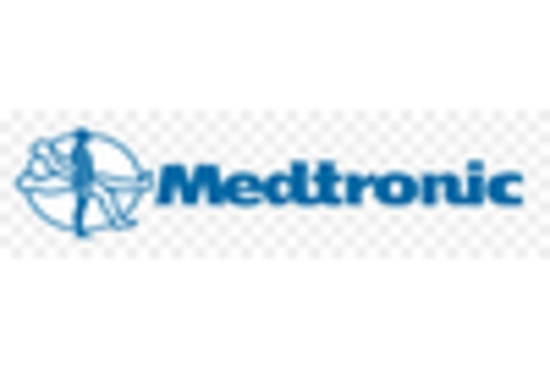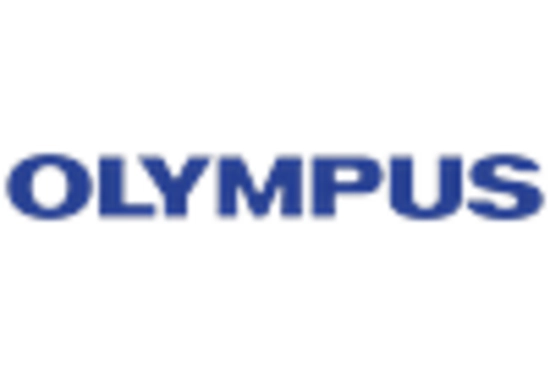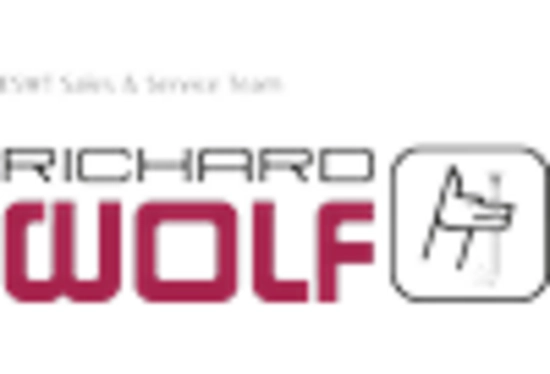Rising Healthcare Expenditure
The Urology Lasers Market is positively impacted by rising healthcare expenditure across various regions. Increased investment in healthcare infrastructure and technology is facilitating the adoption of advanced medical devices, including urology lasers. Governments and private sectors are allocating more resources to improve healthcare services, which includes the procurement of state-of-the-art laser systems for urological applications. This trend is particularly evident in emerging markets, where healthcare systems are evolving rapidly. As healthcare expenditure rises, hospitals and clinics are more likely to invest in urology lasers to enhance their service offerings and improve patient care. This influx of capital is expected to drive growth in the Urology Lasers Market, as more facilities adopt these technologies to meet the demands of an increasingly health-conscious population.
Increased Research and Development
The Urology Lasers Market is benefiting from increased research and development efforts aimed at enhancing laser technologies and their applications. Ongoing studies focus on optimizing laser parameters and exploring new treatment modalities, which could lead to breakthroughs in urological care. Research institutions and medical device companies are collaborating to develop innovative laser systems that address specific urological conditions more effectively. This focus on R&D is expected to yield new products that improve treatment efficacy and patient safety. Furthermore, the investment in clinical trials to validate the effectiveness of these new technologies is likely to bolster confidence among healthcare providers. As a result, the Urology Lasers Market is poised for growth, with new advancements potentially reshaping treatment paradigms in urology.
Growing Prevalence of Urological Disorders
The Urology Lasers Market is significantly influenced by the growing prevalence of urological disorders, such as kidney stones, benign prostatic hyperplasia, and urinary incontinence. As populations age and lifestyle factors contribute to the incidence of these conditions, the demand for effective treatment options is on the rise. Urology lasers offer targeted therapies that can address these disorders with minimal invasiveness. Market analysis indicates that the incidence of kidney stones alone has increased, leading to a higher number of procedures performed annually. This trend is likely to continue, as more patients seek timely interventions. Consequently, the Urology Lasers Market is expected to expand, driven by the need for advanced treatment solutions that cater to the increasing patient population suffering from urological ailments.
Technological Advancements in Urology Lasers
The Urology Lasers Market is experiencing a notable transformation due to rapid technological advancements. Innovations in laser technology, such as the development of high-powered lasers and fiber-optic systems, enhance precision and efficacy in urological procedures. These advancements not only improve patient outcomes but also reduce recovery times, making procedures less invasive. The introduction of new laser systems, such as Holmium and Thulium lasers, has expanded treatment options for conditions like kidney stones and benign prostatic hyperplasia. As a result, the market is projected to grow significantly, with estimates suggesting a compound annual growth rate of over 10% in the coming years. This growth is indicative of the increasing reliance on advanced technologies in urology, which is likely to drive further investment in the Urology Lasers Market.
Rising Demand for Minimally Invasive Procedures
The Urology Lasers Market is witnessing a surge in demand for minimally invasive procedures, driven by patient preferences for less traumatic surgical options. Patients increasingly seek treatments that offer quicker recovery times, reduced pain, and minimal scarring. Urology lasers, known for their precision and effectiveness, align perfectly with these demands. Procedures such as laser lithotripsy and laser prostatectomy are gaining traction, as they provide effective solutions with fewer complications compared to traditional surgical methods. Market data indicates that minimally invasive procedures account for a significant portion of urological surgeries, with projections suggesting that this segment will continue to expand. This trend is likely to propel the Urology Lasers Market forward, as healthcare providers adopt laser technologies to meet patient expectations and improve surgical outcomes.


















Leave a Comment